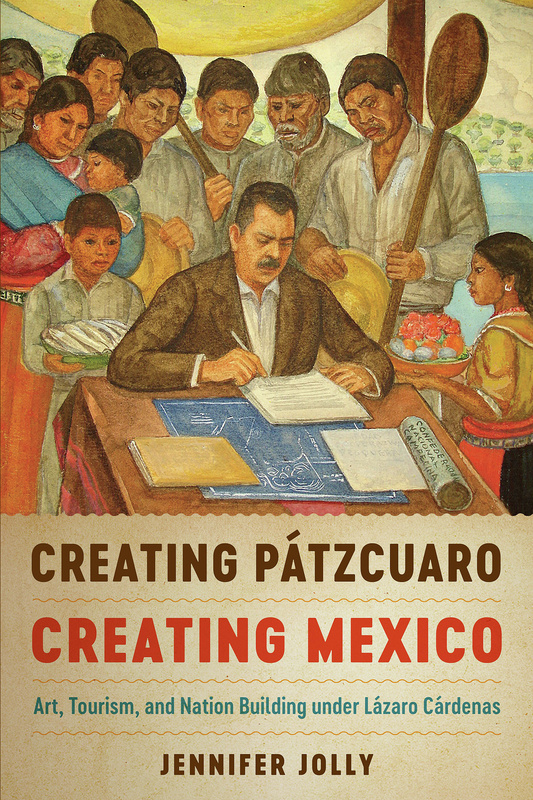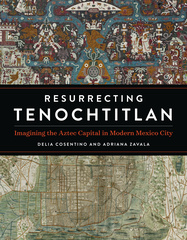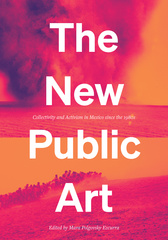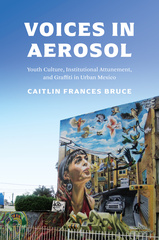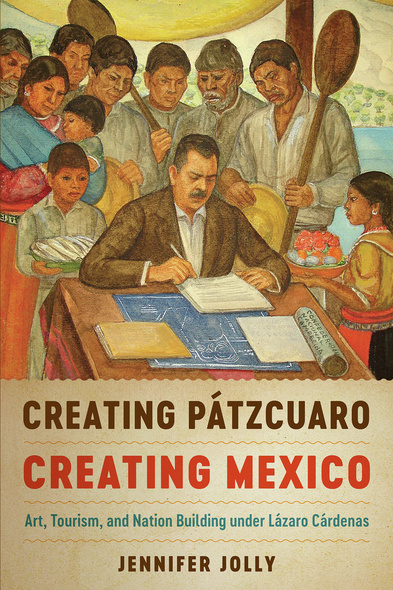
Creating Pátzcuaro, Creating Mexico
Art, Tourism, and Nation Building under Lázaro Cárdenas
LASA Visual Culture Studies Section Book Prize, Latin American Studies Association (LASA)
Winner, Arthur P. Whitaker Prize, Middle Atlantic Council of Latin American Studies, 2019In the 1930s, the artistic and cultural patronage of celebrated Mexican president Lázaro Cárdenas transformed a small Michoacán city, Pátzcuaro, into a popular center for national tourism. Cárdenas commissioned public monuments and archeological excavations; supported new schools, libraries, and a public theater; developed tourism sites and infrastructure, including the Museo de Artes e Industrias Populares; and hired artists to paint murals celebrating regional history, traditions, and culture. The creation of Pátzcuaro was formative for Mexico; not only did it provide an early model for regional economic and cultural development, but it also helped establish some of Mexico’s most enduring national myths, rituals, and institutions.
In Creating Pátzcuaro, Creating Mexico, Jennifer Jolly argues that Pátzcuaro became a microcosm of cultural power during the 1930s and that we find the foundations of modern Mexico in its creation. Her extensive historical and archival research reveals how Cárdenas and the artists and intellectuals who worked with him used cultural patronage as a guise for radical modernization in the region. Jolly demonstrates that the Pátzcuaro project helped define a new modern body politic for Mexico, in which the population was asked to emulate Cárdenas by touring the country and seeing and embracing its land, history, and people. Ultimately, by offering Mexicans a means to identify and engage with power and privilege, the creation of Pátzcuaro placed art and tourism at the center of Mexico’s postrevolutionary nation building project.
Creating Pátzcuaro, Creating Mexico is a much welcomed addition to Mexican regional history…[Jolly] brings to light how the periphery informed nation-state building.
[Jolly's] thorough study on the Mexican town of Pátzcuaro reveals just how constructed geographic identities are through an attention to the players and politics involved in promotional projects...Jolly’s study reminds us that when we visit a charming colonial town or a rustic Indigenous village market, we enter spaces that have been extensively edited, that are anything but natural or neutral...While Creating Pátzcuaro, Creating Mexico provides a compelling way of understanding modern Mexico, its approach is of value for implementation elsewhere in Latin America and beyond...While complex and nuanced in its articulation, this book reminds us of something quite simple: that images and spaces in the service of statecraft wield incredible power, but this power remains open to negotiation and contestation.
Creating Pátzcuaro, Creating Mexico makes important contributions to our understanding of 1930s Mexico, tourism development, art history, and the role of cultural policy in nation building. The book is essential for scholars interested in these fields and accessible for graduate and advanced undergraduate students.
A fascinating journey into art and tourism in Pátzcuaro...a welcome contribution to our understanding of regional art institutions and monuments, the interdisciplinary study of Mexican nation- and region-formation during the 1930s, and most importantly, the emergence of domestic tourism in postrevolutionary Mexico.
Jolly's acute book is successful in giving us a comprehensive view of the mechanisms by which the image of Pátzcuaro was created through a process of power engineering...Creating Pátzcuaro, Creating Mexico demonstrates how history, art, and tourism can be combined and serve as a technology of governance.
Through her consideration of visual culture, Jolly links the regional to the national (and the national to the regional), and thus effectively illuminates the ways in which the molding of Pátzcuaro's local identity contributed to Mexico's nation building overall. Jolly offers a significant study, but her colorful discussion of Pátzcuaro's art, murals, architecture, and streets ensure a lively read as well.
As a compelling account of the creation of a particular historical and cultural narrative for Pátzcuaro in the context of building a national Mexican identity, Jolly's book constitutes both an excellent scholarly contribution and a fascinating and insightful story well worth reading.
[A] magisterial study of cultural patronage and the construction of regional identity in Pátzcuaro...one of the most interesting new books on the history of modern Mexican art to appear in the past several years...It will long stand as the definitive account of this particular time and place...Jolly’s book sets a high bar for future scholars who seek to excavate the histories of these and other sites, where regional differences remain resilient, notwithstanding the forces of industrialisation and globalisation.
Jolly’s study makes a useful contribution to research on and understanding of postrevolutionary nation-building and tourism in terms of the immense ideological power of public art, memorials, monuments and statues in Mexico.
[A] wonderful book…Richly illustrated...Jolly skillfully highlights the connections between the regional and the national…[and] skillfully interrogates elite ideas about Indians and race as Pátzcuaro’s indigenous past and present were propped up as tourist attractions.
Fascinating, smart, provocative—Jolly’s highly successful book blends art history, politics, and theory to make important arguments about the ‘creation’ of Pátzcuaro, Mexico, in the middle decades of the twentieth century. With Pátzcuaro as its case study, Creating Pátzcuaro serves as a wonderful introduction to the cultural and social transformations of Mexico under Cárdenas.
This book makes significant contributions to cultural history and the scholarship on regionalism, tourism, and Cárdenas’s presidency. In fact, given that this is really the only book on regionalism as it pertains to cultural production, I believe it will be eye-opening for scholars in the disciplines of both history and art history. It provides an ambitious model for how we might pursue regional histories of nation building.
- Acknowledgments
- Introduction
- Chapter 1. Seeing Lake Pátzcuaro, Transforming Mexico
- Chapter 2. Creating Pátzcuaro Típico: Architecture, Historical Preservation, and Race
- Chapter 3. Creating the Traditional, Creating the Modern
- Chapter 4. Creating Historical Pátzcuaro
- Chapter 5. Creating Cárdenas, Creating Mexico
- Notes
- Bibliography
- Index

